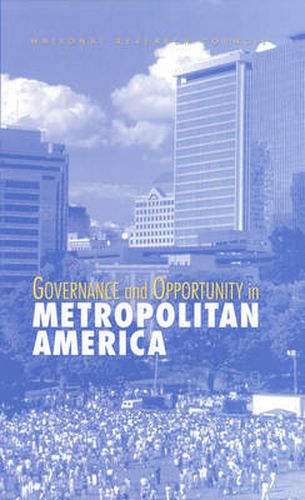Readings Newsletter
Become a Readings Member to make your shopping experience even easier.
Sign in or sign up for free!
You’re not far away from qualifying for FREE standard shipping within Australia
You’ve qualified for FREE standard shipping within Australia
The cart is loading…






America’s cities have symbolized the nation’s prosperity, dynamism, and innovation. Even with the trend toward suburbanization, many central cities attract substantial new investment and employment. Within this profile of health, however, many urban areas are beset by problems of economic disparity, physical deterioration, and social distress. This volume addresses the condition of the city from the perspective of the larger metropolitan region. It offers important, thought-provoking perspectives on the structure of metropolitan-level decision making, the disadvantages faced by cities and city residents, and expanding economic opportunity to all residents in a metropolitan area. The book provides data, real-world examples, and analyses in key areas: distribution of metropolitan populations and what this means for city dwellers, suburbanites, whites, and minorities; how quality of life depends on the spatial structure of a community and how problems are based on inequalities in spatial opportunity - with a focus on the relationship between taxes and services; and the role of the central city today, the rationale for revitalizing central cities, and city-suburban interdependence. The book includes papers that provide in-depth examinations of zoning policy in relation to patterns of suburban development; regionalism in transportation and air quality; the geography of economic and social opportunity; social stratification in metropolitan areas; and fiscal and service disparities within metropolitan areas.
$9.00 standard shipping within Australia
FREE standard shipping within Australia for orders over $100.00
Express & International shipping calculated at checkout
America’s cities have symbolized the nation’s prosperity, dynamism, and innovation. Even with the trend toward suburbanization, many central cities attract substantial new investment and employment. Within this profile of health, however, many urban areas are beset by problems of economic disparity, physical deterioration, and social distress. This volume addresses the condition of the city from the perspective of the larger metropolitan region. It offers important, thought-provoking perspectives on the structure of metropolitan-level decision making, the disadvantages faced by cities and city residents, and expanding economic opportunity to all residents in a metropolitan area. The book provides data, real-world examples, and analyses in key areas: distribution of metropolitan populations and what this means for city dwellers, suburbanites, whites, and minorities; how quality of life depends on the spatial structure of a community and how problems are based on inequalities in spatial opportunity - with a focus on the relationship between taxes and services; and the role of the central city today, the rationale for revitalizing central cities, and city-suburban interdependence. The book includes papers that provide in-depth examinations of zoning policy in relation to patterns of suburban development; regionalism in transportation and air quality; the geography of economic and social opportunity; social stratification in metropolitan areas; and fiscal and service disparities within metropolitan areas.